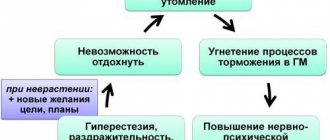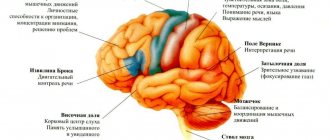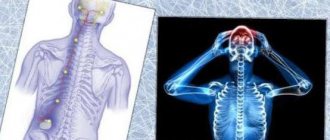Dysgraphia is a written language disorder. Signs and symptoms of deviation, treatment and methods of prevention - what parents of schoolchildren should know.
Children who have just started learning to write try to write neatly. However, the handwriting of most primary school children is clumsy and illegible. Many people write with errors because they do not yet know the basic rules of the Russian language. A child's written speech improves over time, but some children continue to write sloppily, changing letters in places, missing spaces and in the right places. There are a number of signs that should cause parents to become concerned and take their child to see a speech therapist, as they may be symptoms of dysgraphia.
Timely treatment of this disorder is the key to the fact that the child will have competent written speech in the future. That is why it is important to know what dysgraphia is, what its causes and main symptoms are, as well as how this deviation is treated.
Dysgraphia: general information
Dysgraphia is a writing disorder that involves crooked letter writing with multiple misspellings of words. The handwriting of a child with this disorder is illegible, and words may be written in reverse with a large number of grammatical errors. This defect is a consequence of disruption of certain parts of the brain.
Writing impairment, the causes of which lie in the improper functioning of certain parts of the brain, occurs in many children who are beginning to learn the basics of writing. Thus, among second grade students, on average, such a violation occurs in more than half of the class. In the absence of timely treatment, such a deviation entails a decrease in the child’s self-esteem, affects his academic performance, and affects relationships with peers.
Dysgraphia is often accompanied by minor problems with the speech apparatus. This violation has several types and is classified according to severity.
Dysgraphia - characteristic symptoms
Often, due to the large number of students in a class, not every teacher can determine that one of the children has dysgraphia. Teachers assume that illegible and unattractive handwriting is the result of a student's lack of concentration and effort. Dysgraphia is primarily defined by an illegible writing style with the following characteristics:
- inaccurate or incorrect spelling of letters,
- too much tilt from the vertical,
- letters of varying size within the same word,
- confusing letters,
- hesitant, shaky writing;
- diacritics and punctuation marks are lost,
- writing between the lines.
If it is noticeable that in addition to unsightly and illegible handwriting, a child has symptoms such as improper squeezing of the pen, fatigue when writing quickly and an aversion to drawing, one can fairly safely suspect dysgraphia.
In children, symptoms of dysgraphia in grades 1, 3 and 4 manifest themselves in the form of illegible handwriting, missing words, incomplete sentences, some letters bent to the right, others to the left. There are also problems with spelling words. A child very often focuses on the fact of writing a word, but does not understand what he is writing.
Teens and adults have difficulty expressing and communicating thoughts on paper, as well as with grammar and syntax. Writing is much more difficult for them than speaking. There is also a big discrepancy between what a person writes and what he actually knows.
Mechanism of occurrence, causes
Writing is a process that requires the coordinated work of the visual, auditory, speech and motor systems. By the time the child masters the basics of writing, he should have mastered oral speech well. If the lateralization of brain functions is not carried out as needed, then a disorder such as dysgraphia develops. Usually these processes are normalized by the time the child begins school.
If the delay in lateralization causes disturbances in a part of the brain, the child develops dysgraphia, which requires correction. Otherwise, the deviation may affect the child’s thinking, memory, and perception.
Causes of occurrence in children
Dysgraphia can be caused by birth trauma. The development of such deviations is provoked by various infectious diseases and improper upbringing. Also, experts do not exclude such a factor as genetic predisposition.
Dysgraphia in children may be accompanied by other concomitant diseases that were previously diagnosed.
Causes of occurrence in adults
In adults, imperfections in written speech can be caused by both internal and external factors. Main reasons for deviation:
- presence of a tumor in the brain;
- low saturation;
- stroke;
- previous brain surgery;
- poor social conditions.
Social factors include insufficient upbringing in childhood, incorrect speech of people around, and lack of communication with others.
With dysgraphia, errors in the process of writing are persistent, despite the fact that the person knows well all the rules of writing words.
Causes of dysgraphia
For all the time they have been studying this problem, researchers have not come to a consensus about the reasons for its occurrence. Some authors agree with the Soviet neurologist Tkachev, who believed that the cause of reading and writing disorders is poor memory in children. Those. they do not remember letters, syllables, sounds well and therefore cannot correlate sounds with letters.
But there is another opinion, which also found its followers among researchers of this pathology, for example, the Soviet psychiatrist Mnukhin S.S., who insisted that the cause of these problems are negative hereditary factors, such as alcoholism, psychopathy, parental epilepsy, birth injuries. It was also noted that, along with writing impairment, children have a number of other signs. For example, it is difficult for such children to tell about themselves - to give the address, the names of their parents; they mistakenly call the seasons, confuse the days of the week with the months; cannot reproduce the counting and names of the days of the week in strict sequence, even after repeated repetition.
At present, the fragmentation of opinions remains in its original form. Modern authors also identify two possible groups of reasons. The first is associated with a hereditary factor, the presence of similar problems in parents and close relatives. The second group includes organic disorders in the perinatal or postnatal period. Uneven development of the fetal brain structures during pregnancy leads to improper formation of certain functions.
But in modern society, a third direction is also being formed, which is correlated with the cause of the formation of reading and writing impairments - this is the impact of the modern social environment and, therefore, this type of impairment is acquired. Those. Such children do not have hereditary factors, and there are also no organic lesions of the brain structures. This means that the disorder was formed under the influence of incorrectly selected forms of education: untimely start of teaching a child to read and write, developing writing skills at an unacceptably early age, the use of teaching materials that are not appropriate for the age and maturity of the child.
Types of dysgraphia
Dysgraphia can be the result of various reasons. Signs and symptoms of the disorder may vary. The method of rehabilitation and duration of treatment also depend on the type of deviation.
Optical
It is difficult for a child to write letters correctly; he may skip them when writing words, or add unnecessary elements in the form of strokes and sticks. Due to incompletely formed visual-spatial connections, the child often misses letters, writes them incorrectly, and confuses them with others.
Acoustic
Characterized by a lack of ability to correctly recognize sounds. The patient confuses similar-sounding letters and may make mistakes in the degree of softness of the pronounced sounds.
Articulatory-acoustic
The child writes and pronounces letters incorrectly and replaces them with similar sounds. Requests from parents and teachers to pay attention to the correct pronunciation and spelling do not bring results. With this form of disorder, work aimed at auditory differentiation of the child is required. Only by carrying out such corrective work is it possible to completely get rid of the problem.
Ungrammatical
This type of violation is characterized by the fact that the child, when pronouncing and writing, confuses case endings, misses or replaces prepositions with others. This deviation is a consequence of speech disorders.
Disorder caused by defective processes of analysis and synthesis
The main symptoms of this disorder are omitting or replacing letters with others, adding extra syllables, and spelling several words in a row. Such a deviation is preceded by social, psychological, and educational factors, which become the main cause of disturbances in the analysis and synthesis of speech.
Signs of the disease
Dysgraphia is a diagnosis that should be made by a specialist. The deviation can easily be confused with a common misunderstanding of grammar that occurs in most children. With dysgraphia, the mistakes that a child makes while writing are in no way related to the level of knowledge of the Russian language. The teacher at school, as well as the student’s parents, should be wary if the child repeatedly makes the same mistakes: misses letters, confuses the combined and separate spelling of words. In addition, such a child’s handwriting is illegible, and the size of the letters constantly changes from small to large, not only in one sentence, but also in one word. The writing speed is very slow. Often, children with dysgraphia are given poor grades due to mistakes and poor handwriting, which greatly affects the child’s academic performance and self-esteem. That is why it is very important to promptly identify a violation of written speech in a child, find out the cause of the deviation in order to undergo a course of correction.
What is dysgraphia and how to deal with it?
01/17/2019 The problem of written language disorders in schoolchildren is one of the most pressing topics, since writing and reading become the basis and means of further learning.
Written speech is one of the forms of existence of language, secondary, later in time than oral speech. Partial disorder of reading and writing processes is designated by the terms “Dyslexia” and “Dysgraphia”.
To understand the mechanisms of occurrence of these violations, it is necessary to understand what controls the processes of reading and writing, where all the threads are collected, along which the command goes to do this or that.
The process of developing writing is complex.
It involves four analyzers:
- speech motor, which helps to carry out our pronunciation;
- auditory speech, which helps to select an unnecessary phoneme;
- visual, which selects the appropriate grapheme;
- motor, with the help of which the grapheme is translated into kineme (Reproduction of a visual image using hand movements).
Only with coordinated work of all analyzers, with the preservation of certain brain structures, will successful mastery of written speech be ensured.
Dysgraphia
is a partial specific writing disorder.
The reasons for this violation may be different. Some are associated with the influence of internal factors (for example, long-term somatic diseases, pathology of pregnancy, childbirth, asphyxia, a “chain” of childhood infections), which lead to minimal brain dysfunction (MCD), general speech underdevelopment (GSD), mental retardation ( ZPR). Other reasons are associated with external factors: incorrect speech of others, lack of speech contacts, bilingualism in the family, insufficient attention to the child’s speech development on the part of adults. All this delays the formation of mental functions involved in the writing process.
As a rule, one can talk about manifestations of dysgraphia already in the middle of 1st grade, but a speech therapist can give an official conclusion only by the end of 1st grade.
In speech therapy, there are five forms of dysgraphia:
1. Articulatory-acoustic form of dysgraphia
Its essence is as follows: A child who has a violation of sound pronunciation, relying on his incorrect pronunciation, records it in writing. In other words, he writes as he pronounces. Such errors will remain in the writing until the sound pronunciation is corrected; it is impossible to correct the writing based on pronunciation.
Let me give you an example. The child is studying in the 7th grade, writing
2. Acoustic form of dysgraphia
This form of dysgraphia manifests itself in the substitution of letters corresponding to phonetically similar sounds. At the same time, in oral speech, sounds are pronounced correctly. In writing, letters are most often mixed, indicating voiced - unvoiced (B-P; V-F; D-T; Zh-Sh, etc.), whistling - hissing (S-Sh; Z-Zh, etc.). ), affricates and components included in their composition (CH-SH; CH-TH; C-T; C-S, etc.).
It also manifests itself in the incorrect designation of the softness of consonants in writing: “pismo”, “lubit”, “hurt”, etc.
3. Dysgraphia due to impaired language analysis and synthesis
This is the most common form of dysgraphia in children suffering from written language disorders. The following errors are most typical for it:
1. omissions of letters and syllables;
2.rearrangement of letters and (or) syllables;
3.underwriting words;
4. writing extra letters in a word (this happens when a child, while pronouncing while writing, “sings the sound” for a very long time;
5. repetition of letters and (or) syllables;
6.contomination - syllables of different words in one word;
7. continuous writing of prepositions, separate writing of prefixes (“on the table”, “on stepped”).
4. Agrammatic dysgraphia
Associated with underdevelopment of the grammatical structure of speech. The child writes ungrammatically, i.e. as if contrary to the rules of grammar (“beautiful bag”, “happy day”). Agrammatisms in writing are noted at the level of words, phrases, sentences and text.
Agrammatic dysgraphia usually manifests itself from the 3rd grade, when a student who has already mastered literacy “closely” begins to study grammatical rules. And here it suddenly turns out that he cannot master the rules of changing words according to cases, numbers, and gender. This is expressed in incorrect spelling of the endings of words, in the inability to coordinate words with each other.
5. Optical dysgraphia
Optical dysgraphia is based on insufficient development of visual-spatial concepts and visual analysis and synthesis. All letters of the Russian alphabet consist of a set of the same elements (“sticks”, “ovals”) and several “specific” elements. Identical elements are combined in different ways in space and form different letter signs: i, w, c, sch; b, c, d, y... If a child does not catch the subtle differences between letters, then this will certainly lead to difficulties in mastering the outline of letters and to incorrect representation of them in writing.
Errors most common in writing:
— underwriting of letter elements (due to underestimation of their number):
L instead of M; X instead of F, etc.;
— adding extra elements;
- omissions of elements, especially when connecting letters that include the same element;
- mirror writing of letters.
What you need to pay special attention to:
1.If your child is left-handed.
2. If he is a retrained right-hander.
3. If your child attended a speech therapy group.
4. If the family speaks two or more languages.
5. If your child went to school too early (learning to read and write unjustifiably earlier sometimes provokes the occurrence of dysgraphia and dyslexia.) This happens in cases where the child has not yet reached the psychological readiness for such learning.
6. If your child has problems with memory and attention.
7. Mixing letters by optical similarity: b-p, t-p, a-o, e-z, d-u.
8. Errors caused by impaired pronunciation, the child writes what he says: leka (river), suba (fur coat).
9. With impaired phonemic perception, the vowels o-u, e-yu, consonants r-l, y-l, paired voiced and voiceless consonants, whistling and hissing, sounds ts, ch, shch are mixed. For example: tynya (melon), klyokva (cranberry). 10. Missing letters, syllables, missing words. For example: prta - desk, moko - milk, cheerful (cheerful).
Some tips for parents:
1. If a child is assigned to read a text at home or write a lot, then break the text into parts and complete the task in several steps.
2. Do not force your child to rewrite homework many times; this will not only harm the child’s health, but also instill in him insecurity, and also increase the number of mistakes.
3. Praise your child for every success achieved, humiliate him as little as possible.
A FEW EXERCISES to help overcome dysgraphia
Exercise "Proofreading".
For this exercise you need a book, boring and with a fairly large (not small) font. The student works every day for five (no more) minutes on the following task: crosses out the given letters in a continuous text. You need to start with one letter, for example, “a”. Then “o”, then the consonants with which there are problems, first they also need to be asked one at a time. After 5-6 days of such classes, we switch to two letters, one is crossed out, the other is underlined or circled. The letters should be “paired”, “similar” in the student’s mind. For example, as practice shows, most often difficulties arise with the pairs “p/t”, “p/r”, “m/l” (spelling similarity); “y/d”, “y/y”, “d/b” (in the latter case the child forgets whether the tail of the circle is pointing up or down), etc.
The pairs required for development can be established when viewing any text written by your child. After seeing the correction, ask what letter he wanted to write here. More often than not, everything is clear without explanation.
Attention! It’s better if the text is not read (that’s why the book needs to be boring). All attention must be concentrated on finding the given shape of a letter, one or two, and work only with them.
"Missing letters"
When performing this exercise, it is suggested to use the hint text, where all the missing letters are in their places. The exercise develops attention and confidence in writing skills.
Labyrinths
.
Labyrinths are good for developing gross motor skills (movements of the hand and forearm), attention, and continuous line. Make sure your child changes the position of his hand, not the sheet of paper.
There are also ready-made speech therapy notebooks for the prevention of dysgraphia, they are freely available on the Internet, you can download and print.
It is important to understand that correction of dysgraphia is a complex and time-consuming process. Fortunately, yes, with some effort on the part of both parents, specialists, and the child himself, dysgraphia can be corrected. Of course, this is not a quick process: it may take months or years of systematic training to completely overcome dysgraphia and accompanying writing, speech and reading disorders.
Dysgraphia
- this is not a death sentence, you can live with it, but the task of parents and teachers should be to overcome this illness. Fortunately, many methods and exercises have been developed to eliminate dysgraphia.
Dysgraphia is a disorder that can and should be worked on: do exercises, correct related problems (for example, dyslexia, communication problems with peers). The peculiarities of this disorder and its significance for the child’s future life cannot allow for unprofessional intervention - it is necessary to contact specialists, first of all, a speech therapist.
Presentation
Diagnosis of dysgraphia
Only a specialist who has previously diagnosed the disorder using special studies can prescribe an appropriate course for dysgraphia correction. In addition, consultation with specialists such as a neurologist and speech therapist is necessary to make a diagnosis.
The examination of the patient includes several stages, the first of which is to assess the condition of the central nervous system, vision, and hearing of the patient. Then specialists analyze the child’s articulation and motor skills. Important stages include assessing sound pronunciation, vocabulary, and literacy level. A writing assessment is then required, with experts taking into account whether the patient is right-handed or left-handed.
For the purpose of research, the child will be asked to write down words under dictation, rewrite capital and printed letters, and perform special exercises. After analyzing the information obtained during the study, the speech therapist makes a diagnosis and gives the necessary recommendations on how to correct written speech disorders, if any.
Treatment: examples of written exercises
There are three ways to treat dysgraphia.
- You can change the form of the letter. If a child struggles with movement disorders, they can write on the computer and transfer their knowledge orally.
- One form of treatment for dysgraphia may also be to change the demands placed on the person affected by this problem.
- The last solution for dysgraphia can be special exercises for the hands, eyes and focus, and to perform them you will need not only a pen and a sheet of paper, but also crayons, paints, markers, and colored paper. In this way, exercise turns into a game.
Treatment of dysgraphia should be carried out using a special set of tasks developed by a psychologist or teacher. These tasks should be selected individually, taking into account the child’s predispositions and capabilities. Some of them:
- drawing “lazy eights” - you need to move your hands in the air, freely drawing big eights,
- correcting and thickening the contours of the image with felt-tip pens, following the line of the drawing,
- tracing the template this could be a template cut out of cardboard with simple shapes at the beginning. You can also ask your child to trace his or her arm or leg on paper.
- drawing with large free movements on paper or other media using a brush, marker, or chalk.
- covering with color one selected part of a sheet of a certain shape, you can ask the child to paint, for example, a square in the corner of the page,
- precise drawing of lines, preferably in checkered notebooks, where the child will find more guidelines when drawing,
- copying a picture, this option can be easier by drawing a grid on the picture and on a blank sheet of paper (it will help you find guidelines for redrawing),
- connecting points with solid lines,
- rewriting letters in lines,
- linking images with corresponding titles. You can draw various objects on a piece of paper and write their names under them, then the child must connect them and then color the pictures.
Dysgraphia is one of the conditions that can be associated with bad memories of school times. It is important to quickly diagnose the problem and begin treatment as soon as possible. If symptoms of dysgraphia are observed in a child, it is necessary to begin occupational therapy with a teacher or psychologist.
dysgraphia with speech therapist
Methods for correcting dysgraphia
The method of correction depends on the severity of the child’s written language impairment. In addition, the method of treating the deviation is influenced by the degree of neglect, as well as the characteristics of the patient. Correction is a long and complex process that requires persistence on the part of teachers and parents, patience, endurance and a positive attitude of the patient. If you follow all the necessary recommendations, dysgraphia can be completely cured. It is better if the disorder is diagnosed at an earlier age, since the course of correction for older schoolchildren is longer due to the presence in most cases of additional speech and writing disorders. In this case, the time required for rehabilitation will take more. There is also a high risk that the violation cannot be eliminated completely.
It is impossible to get rid of dysgraphia on your own. This process requires the participation of many highly specialized specialists, for example, a psychologist, a neuropsychologist. However, the main work falls on the speech therapist, who will have to select a rehabilitation program appropriate to the severity of the disease and the individual characteristics of the patient. The specialist individually selects the necessary sound pronunciation exercises. Classes are aimed at improving motor skills, developing the patient’s lexical and grammatical structure, as well as improving phonemic speech recognition.
Methods for correcting dysgraphia, which are among the most effective:
- Exercises through which the patient learns to correctly understand sounds, words, and letters.
- Tasks aimed at training memory, improving thinking, and developing perception.
- Exercises necessary for the patient to learn to correctly recognize letters that are similar in appearance.
- Proper production of sounds, work on speech automation.
- Educational games to improve sound analysis.
In some cases, specialists include drug treatment, physiotherapy, massage, and exercise therapy in the rehabilitation course. This often applies to patients whose dysgraphia was caused by organic causes. It is important to know that drug treatment should be prescribed exclusively by a qualified specialist.
Speech therapy correction
Auditory differentiation of sounds is what needs to be achieved initially when treating dysgraphia. If a child cannot distinguish sounds, then further exercises will not be effective. The rehabilitation period is determined individually and depends on many factors. Classes with a speech therapist are possible both in a group with other children and individually. It depends on the wishes of the child and his parents.
During classes, the speech therapist gives the child verbal and visual exercises, as well as practical lessons, during which correctional work takes place.
Exercises you can do at home
Since it is impossible to get rid of dysgraphia on your own, experts, in addition to basic classes, recommend doing additional exercises at home to consolidate the results obtained with a speech therapist.
Exercises that can be done at home should also be agreed upon with a speech therapist. It is important that parents supervise the technique and regularity of classes. The simplest but most effective exercises that you can do at home with your parents include:
- Labyrinth. The child draws a line on a piece of paper, moving only his hand. You cannot make breaks or change the position of the sheet.
- Search for objects or pictures. The child searches for and paints the objects found.
- Exercises aimed at developing attention. The child must read the text and look for missing letters or words, writing them in the right places.
- Improved articulation. The child learns songs, rhymes, and tongue twisters.
- Logorhythmics.
To get a positive result as quickly as possible, home exercises should be performed regularly. This will significantly shorten the rehabilitation period.
Dysgraphia and ugly writing
It happens that a child has ugly handwriting, but the features attributed to dysgraphia do not appear. We are talking in particular about slanted, overlapping or large letters, as well as the difficulties of combining them.
Children or adults who do not have signs of dysgraphia and have unsightly handwriting can improve their skills. Calligraphy master classes have become very popular lately. If you have decided not to send your child to such classes, then you should study with him at home. Exercise will definitely bring beneficial effects.
To improve a parent's or child's writing skills, it is important to use professional and trusted sources.
Forecast, preventive measures
The prognosis for the treatment of dysgraphia depends on a number of factors: the timeliness of the measures taken, the severity of the deviation, its form, the reasons that provoked the formation of the written speech disorder, as well as the individual characteristics of the patient. Only through the well-coordinated work of specialists, the patience and perseverance of parents, as well as the positive attitude of the child, can a positive result be obtained in the end. The problem associated with impaired written speech can be completely corrected in more than 80% of cases.
Parents of a child who has been diagnosed with dysgraphia should be aware that the lack of a timely response can lead in the future to:
- Poor academic performance, which is fraught with intellectual retardation in the development of the child.
- The appearance of suspiciousness and anxiety.
- The emergence of problems with peers.
In addition, an advanced form of dysgraphia is the cause of a child’s deviant behavior and low self-esteem.
For a child with an advanced form of dysgraphia, the need to write something will always cause discomfort. This leads not only to poor academic performance, but also to a complete lack of desire to learn and master new material.
Prevention of dysgraphia
Experts cannot name the exact causes of dysgraphia. In addition, it is believed that such a violation of written speech cannot be prevented. However, there are known risk groups whose representatives more often suffer from the presence of such a deviation. This:
- Bilingual children;
- Patients with mental retardation
- Children who were retrained to write with their right hand
- Hyperactive children
- Children who started learning too early
Prevention measures include training memory and attentiveness, increasing vocabulary. It is important to know that if a child constantly makes the same mistakes when writing words, there is no need to postpone visiting a speech therapist until later. If a child has a written speech disorder, the sooner correctional work is started, the faster and easier it will be to get rid of the problem, which is fraught with serious consequences for the child in the future.
Dysgraphia - what are its causes?
Dysgraphia can develop as a result of damage to the part of the brain responsible for mastering writing skills, as well as visual perception, which leads to impairment of memory and visual analysis abilities.
Dysgraphia can be caused by some abnormality in hand function, muscle tone (too much muscle tension), especially in the fingers and wrist, as well as established poor writing habits.
Dysgraphia can be associated with the child’s psychomotor disorders, hyperactivity and neurosis. There is also the so-called vague dysgraphia, which can be caused by neglect of the child’s education or mental development disorders. Then it becomes noticeable that mental development is not going as it should.
Dysgraphia in primary schoolchildren very often accompanies diseases such as ADHD (attention deficit hyperactivity disorder), Tourette syndrome and autism.
Very often, parents of children suffering from dysgraphia themselves face this problem. If signs of the disease are noticed at an older age, this is most likely due to neuralgia.
Dysgraphia in younger schoolchildren photo









